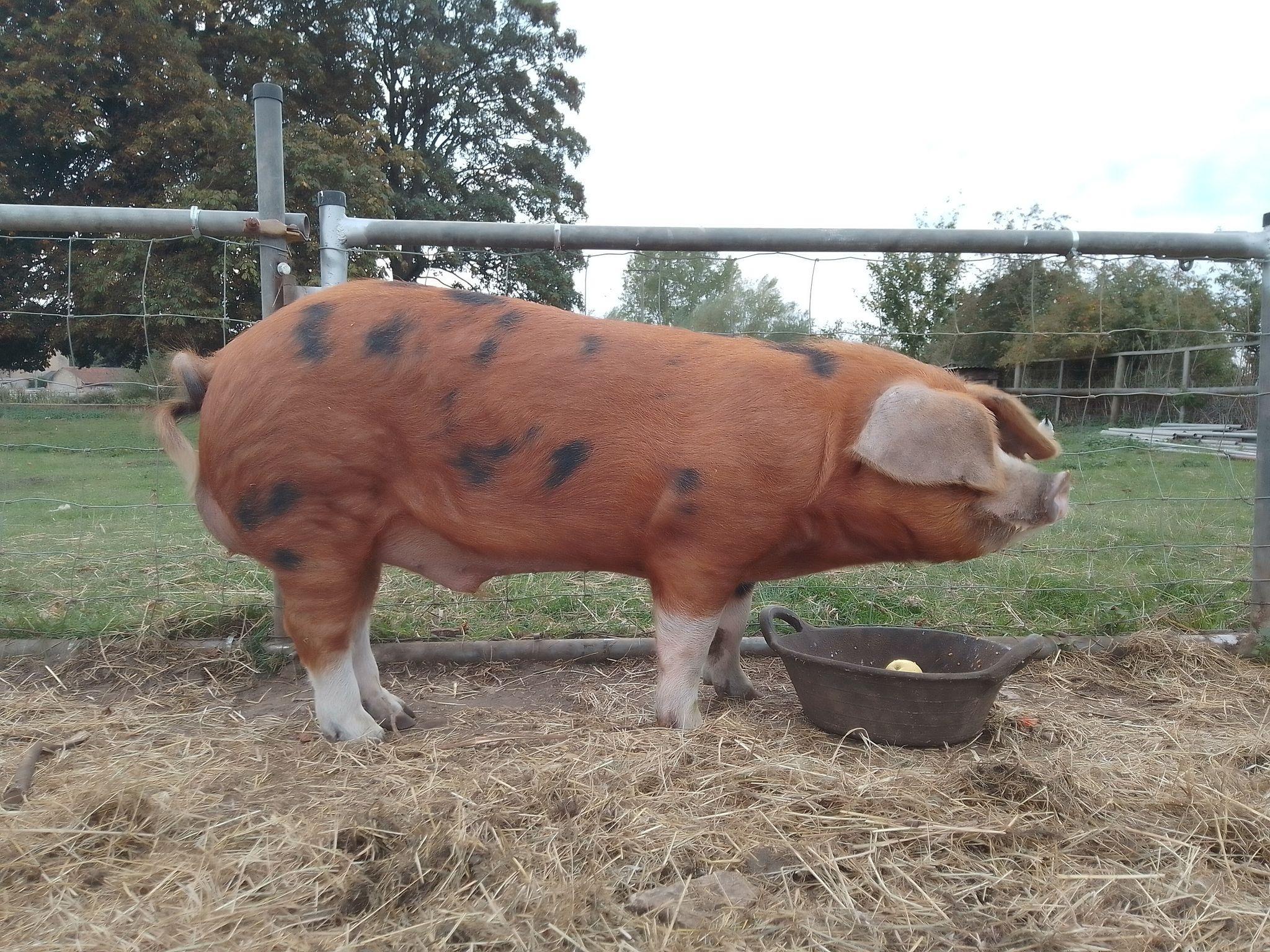
4 minute read
Evolutionary Observations of our Breed
Over the last 20 years the Oxford Sandy and Black has been evolving and developing with observations being recorded. It is through our observations that we are able to analyse the breeding potential and hope that our influences and our sense will adhere to our better judgement to better our breed and its breed potential. In general the evolution of British pigs have come a long way thanks to Robert Bakewell and not just the characteristics of the breeds but the formation of bloodlines, pedigrees and of course the structure and evolution of each of our recognised British Breeds which we come to recognise today.
Should we be forever looking to embrace changes in our breed and are these changes good?
Advertisement
We all look at our sows, boars, gilts and weaners everyday but because we own them we tend not to look at them with a critical eye and if we do look at them with a critical eye are we being too critical. Is beauty in the eye of the beholder? After all “pretty sells” … right?
Observations over the years have been:
● Colouration: 18 years ago OSB’s were particularly light in colour. In particular the Clarence line did suffer such a problem and this has improved over the years whereby we now see the Clarence bloodline a nice sandy colour. But do not be mistaken, that when you see older sows/boars they will and can become lighter in colour, like us they do go lighter with age. Some keep their colour and some go even darker with age. ● Markings: The breed is seeing black flecks instead of patches or blotches and in some cases not very many patches or blotches. REMEMBER THE "BLACK" DEFINES OUR BREED - we are seeing less markings and remember that for a boar to carry less black markings will interfere with the recognition of the breed as the boar carries over 60% of the breeding influences. ● Length: Observations have been noted of our beed being long in length, sometimes too long giving problems when serving. Also observed is heavy dips in the back. ● Facial points: Long snouts are common place as is suppressed eyes leading to sight problems. Wrinkly eyes are also a trait being observed. This may be due to overweight or that the face is too dished. Long snouts in our breed is not to be encouraged. The breed has come along way to have this fault being bred out
What about our breed, the Oxford Sandy and Black, has it changed over the years? Are there noticeable changes, are these changes good or bad or are we just recognising the breed as the years go by and just taking the breed for granted. So does that mean what we own, breed or being sold is just good enough because the breed is evolving and our observations are dictated to us by experience. But what if our experiences are limited.

Photo: Andrew Rock - Clarence boar

● Feet: The actual feet have been recognised as being very lean whilst others very thick set. Noticeably on boars. Also an increase in nail growth and knocked knees. ● Litter sizes: We have seen an increase in litter sizes over the years. Whereby the average litter size would be eight. We are now seeing litter sizes of 16 and 18. This does fluctuate from year to year. With the largest size being mentioned by the late Andrew Sheppy coming from Chasewoods Princess who had litter sizes of 20 and 22. Recently in November we had Rachel Rivers from Lawn Farm record a litter a of 20. We have be monitoring the litter sizes since 2015 on Oxford Sandy and Black Pig Foundation Charity. It is recorded via a bit of fun whereby we monitor the litter sizes and at the end of every year we offer a GBP25.00 M&S Voucher. I must say that the overall live litter size has been considerably larger with the average common size being 12. The results we have seen are as follows: ○ 2015- 15 ○ 2016 - 16 ○ 2017 - 15 ○ 2018 - 17 ○ 2019 - 16 ○ 2020 - 15 ○ 2021 - 15 ○ 2022 - 16
● Teat alignment: boars and sows with 16 teats are now developing within our breed with 14 being more common. This has improved when 14 to 16 years ago we would normally see 12 teats being observed. ● Size: this is of great concern. The adult size of our breed has greatly reduced in size. Please remember that our pig is a large pig and that pigs stop growing at two years of age.
Visit our website and click the “the OSB pig” tab and then click “OSB Breed Standard” and familiarise yourself around our our breeds traits.











